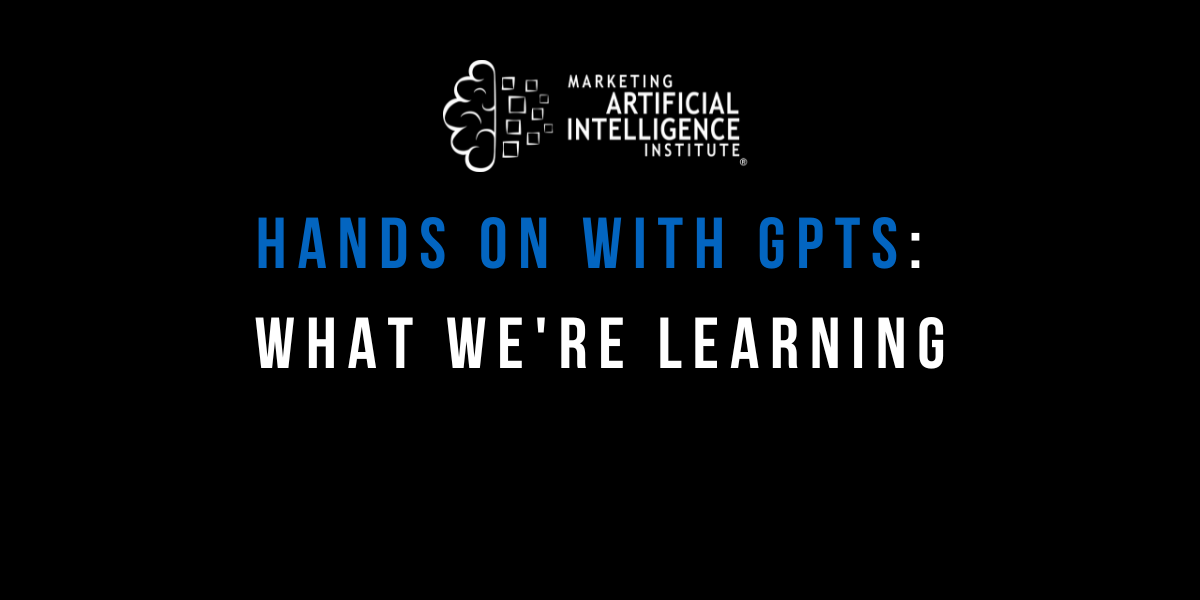GPTs from OpenAI are now available for all ChatGPT Plus users—and people are already hard at work building GPTs to do, well, everything.
That includes us here at Marketing AI Institute. In Episode 72 of The Marketing AI Show, founder/CEO Paul Roetzer and I shared our hands-on experiments with GPTs.
Here’s what we’ve learned so far…
GPTs are flawed, just like ChatGPT…
We have to address upfront that GPTs still have plenty of flaws. In fact, they have the exact same flaws as ChatGPT. They make things up. They hallucinate even when you give them your own data and files.
“You have to use it the way you would use ChatGPT,” says Roetzer. The same guardrails and precautions apply to GPTs as they do to ChatGPT. Remember, this technology is still experimental. You’ll want to use it with low-risk use cases. You’re not training GPTs on your sensitive company data anytime soon.
…But they’re still impressive.
Despite the flaws, GPTs are impressive. Both myself and Paul were able to build the beginnings of valuable, useful tools in minutes.
In Paul’s case, he built a Generative AI Policy Builder. Paul gave the GPT a bunch of context about how companies should think about creating generative AI policies, including questions and issues to consider.
He used structured prompting tips from Ethan Mollick to give the GPT instructions on its role, tips on how to give advice, and constraints to follow. In minutes, Paul had a prototype policy builder that built out robust guidelines for text generation tools.
“My initial testing of this actually worked really well. It did exactly what I instructed it to do,” he says.
Mike also saw success building a GPT that helped him plan and schedule his day faster and more effectively.
And they have massive potential.
It’s still early, but GPTs have massive potential. They empower any knowledge worker with expertise to share to build a powerful tool that leverages that expertise—completely without code or expensive software subscriptions.
For us, as speakers and educators, we teach many different concepts, models, and frameworks that our audience can then use to develop AI literacy. Being able to build tools around that knowledge is a major unlock for our business.
“I’m immediately thinking about all of the repetitive, generative, data-driven things we do all the time, where we’re trying to teach someone a process,” says Roetzer. Each one presents a golden opportunity to create immense value for our audience and our business by building a GPT around it.
Mike Kaput
As Chief Content Officer, Mike Kaput uses content marketing, marketing strategy, and marketing technology to grow and scale traffic, leads, and revenue for Marketing AI Institute. Mike is the co-author of Marketing Artificial Intelligence: AI, Marketing and the Future of Business (Matt Holt Books, 2022). See Mike's full bio.



